Salesforce Conversion Leads
Salesforce CRM is a robust cloud-based platform designed to streamline and optimize customer relationship management. It offers a comprehensive suite of tools for sales, marketing, and customer service, enabling businesses to effectively manage leads, track customer interactions, and drive meaningful engagements. With its customizable interface and powerful analytics, Salesforce CRM empowers organizations to enhance productivity, foster stronger customer relationships, and make data-driven decisions to propel business growth.
Get Started
Taking advantage of the power of Salesforce CRM within the Signalsight platform involves just a few simple and easy steps. You can easily complete these steps using the Tracker Wizard.
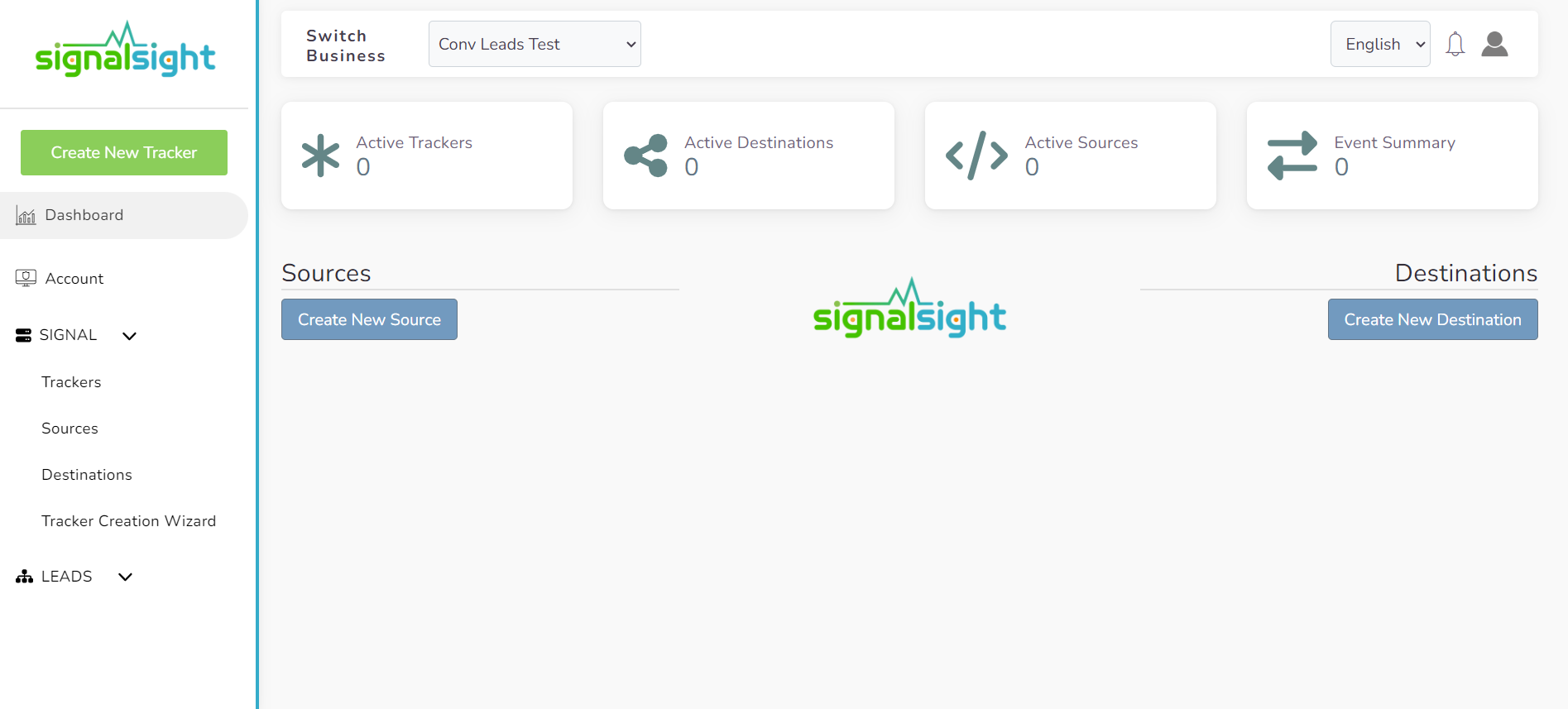
Creating a New Tracker
Salesforce Source Creation
In the first step of the wizard, we select Salesforce CRM as the relevant CRM when creating the source. Then, we give our source a name and start establishing our connection by entering the CRM Host information. If you're unsure how to obtain the CRM Host information, you can refer to the next subsection titled 'How to Get CRM Host?' If you've already completed this step, you can proceed with Salesforce CRM Mapping.
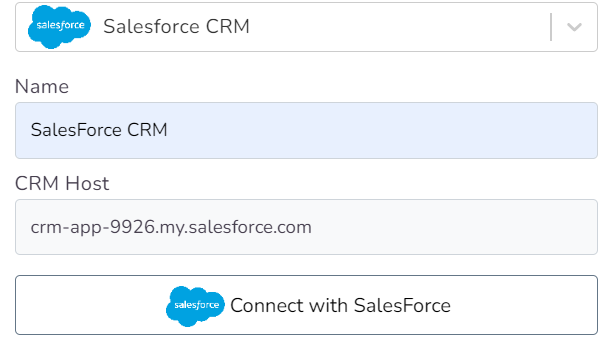
How to Get CRM Host?
When you want to add your Tracker to Salesforce CRM, you can find information about the CRM Host field in your Salesforce panel. First, log in to your Salesforce CRM account. Then, by clicking on the avatar icon in the top menu on the right-hand side, you'll find a URL ending with salesforce.com under your name. Simply copy this URL.
Once you enter the copied URL in the Signalsight source creation step, a button will appear to Connect to Salesforce. Through this button, log in to your respective account and grant the necessary permissions. This way, you'll successfully complete the process of linking your account.
Salesforce CRM Mapping
After your connection is established, you'll be asked to perform mapping related to your source.
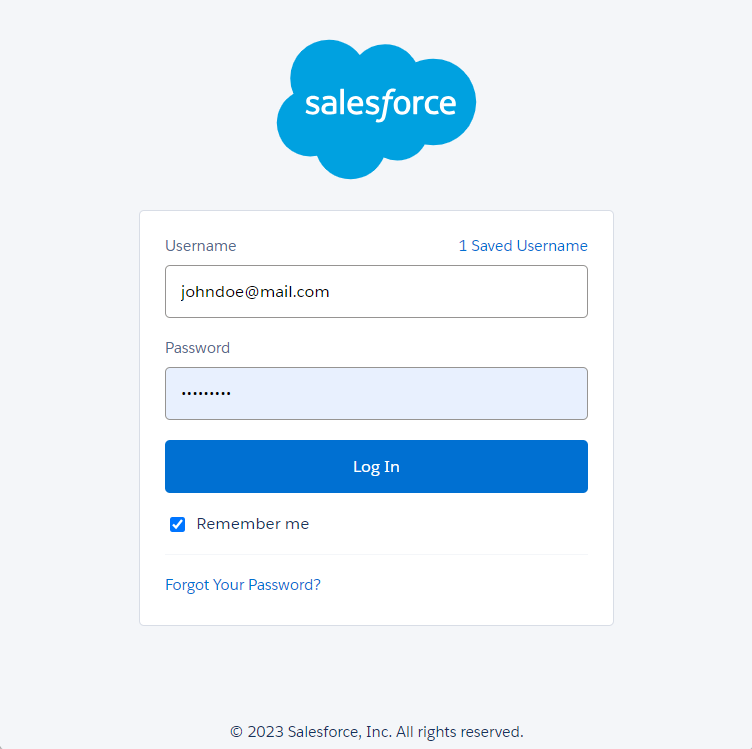
The Prefix field can also be left empty based on your preference. In this case, transmissions will be sent with Lead Statuses such as 'Qualified Lead' or 'Junk.' If the prefix 'CRMLeads' is provided, it will have a naming convention like 'CRMLeads-Junk'.
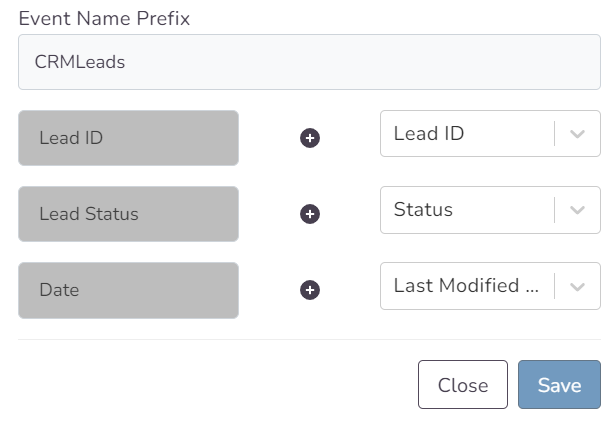
The other three rows are where you decide how to map the fields related to your leads. You can choose 'None' to skip mapping and then click the Save button, completing the source creation step. It is important to map your leadgen_id field correctly for the conversion lead.
Choosing a Destination and Getting Started with Conversion Leads
In the second step of the wizard, you will create a destination. You should create Meta Conversions Api as destination type for Conversion Leads. Here you are presented with 2 different methods. If you want, you can create Pixel and Meta CAPI destinations with the Save button by entering the pixel id and access token information. In addition, if you have pixel access, create the destination by selecting the account you will access via the Connect Facebook CAPI button and the pixel below it.
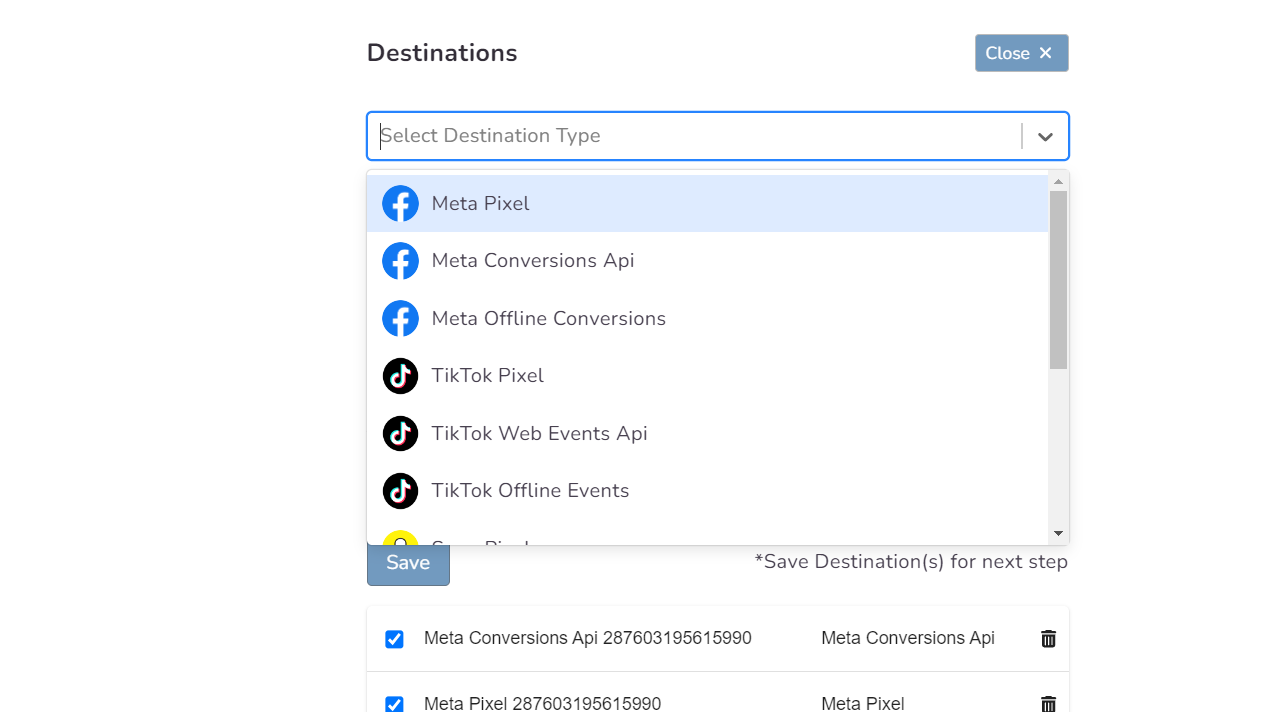
In this step of the Wizard, you can give your tracker a name, view the selected source and destination just below, browse the summary, and complete the process.
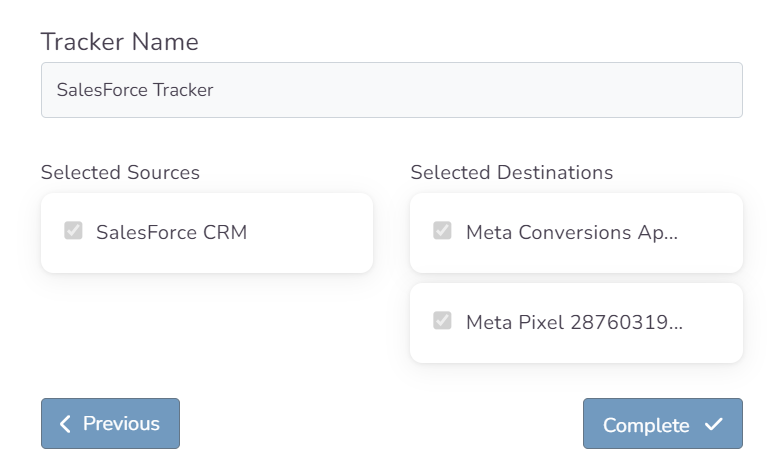
With the completion of the tracker, you can view your source and destination on the tracker detail screen.

You can update the mapping and review the sent data history at any time in your Tracker via the 3 dots in the action area specific to each source. However, you should not forget that organizing mapping for advertisements whose learning process has been completed may cause this learning process to start over again. Additionally, with the "Edit Mapping" you can not only update the mapping but also modify the CRMLeads prefix that will precede your event names. Through the testing feature, it displays an example lead data if there's been a lead generated within the last 7 days.
The Validation Phase
Monitoring CRM events
- Once CRM events start flowing you will enter a validation phase, typically lasting 7 days
- During this phase you will work closely with Facebook to identify any errors or issues which may be identified
- All errors must be corrected before you can exit the validation phase and proceed to mapping events to your sales funnel
Validation Phase Exit Requirements
- Your CRM events must provide maximal coverage of all Facebook-generated leads. For example, if 100 leads are generated in a day, then your CRM events for that day should endeavor to cover all of those leads
- We recommend you send at least 3-4 distinct CRM events so that the model can learn a more complete view of your sales funnel. Minimally, you must send in at least 2 events:
- - the initial lead corresponding to a FB-generated lead
- - a target CRM event for which you most want to optimize

Define Your Sales Funnel
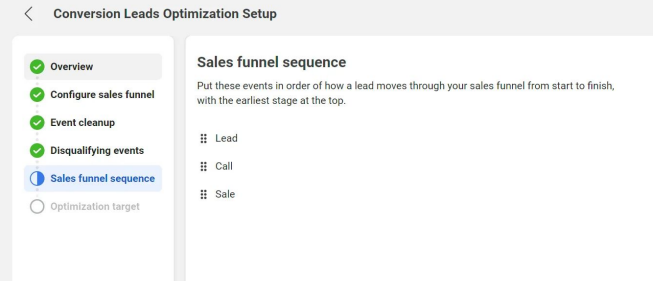
The “Continue Setup” button will be enabled in Events Manager Settings after you’ve exited the validation phase
In each of the sections above, identify CRM events:
- ﹘ that are not events in your sales funnel
- ﹘ that are disqualifying events
- ﹘ and the sequence in which they occur in your sales funnel
The last step in the integration process is to identify the earliest event in your sales funnel you want to optimize toward
The optimization target need not be the final event in your sales funnel, rather the depth you most want to attract audiences
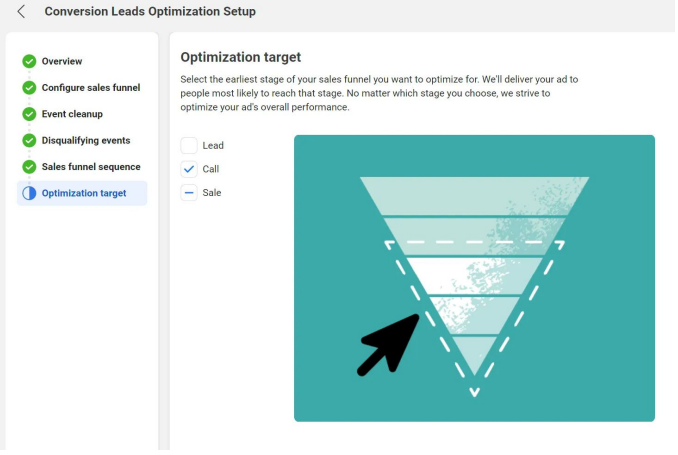
Run Conversion Leads Campaigns
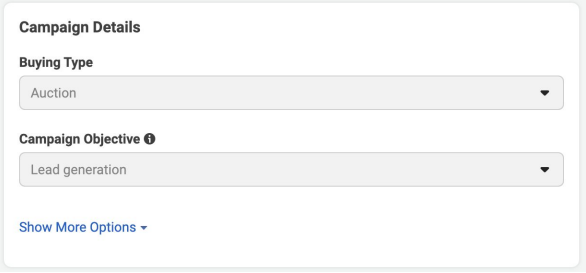
Campaign: Specify the “Lead generation” objective
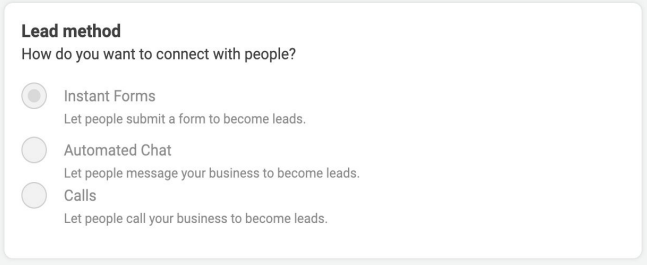
Ad Set: use an Instant Form for higher quality leads
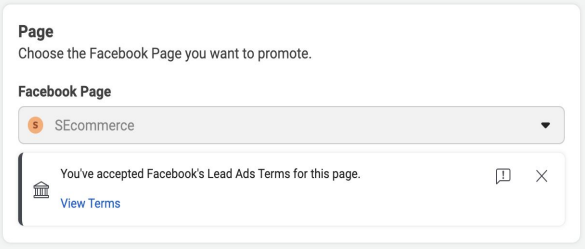
Ad Set / Ad: Choose the Page for associating leads

Ad Set: Choose the “Conversion Leads” optimization
